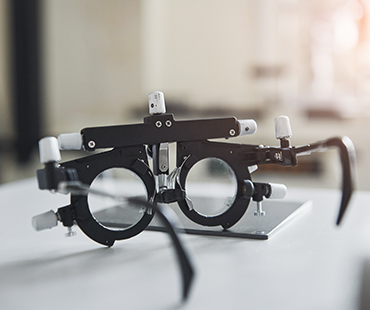
15-10-2020
What is Glaucoma? What are the symptoms of Glaucoma?
What is glaucoma?
Glaucoma is high intraocular pressure. This high pressure can adversely affect the optic nerve. The task of the optic nerve is to send the visible images to the visual center of the brain, enabling the individual to see. When the optic nerve is damaged, there is a risk of vision loss and even blindness.
Causes of Glaucoma
The intraocular fluid that nourishes the eye is made inside the eye. This fluid leaves the eye through a channel called the discharge angle inside the eye. In glaucoma, obstructions in this excretory channel cause intraocular fluid to accumulate in the eye and increase intraocular pressure.
Who Should Pay Attention to Glaucoma Risks?
Heredity is important; If your close relatives have glaucoma, you are also at increased risk of glaucoma. The risk of glaucoma usually begins after the age of forty. Other risk factors: high intraocular pressure, eye injuries, and eye surgeries, thin cornea, diabetes/blood pressure and heart disease, optic nerve problems, use of cortisone medication.
Causes of Glaucoma
The intraocular fluid that nourishes the eye is made inside the eye. This fluid leaves the eye through a channel called the discharge angle inside the eye. In glaucoma, obstructions in this excretory channel cause intraocular fluid to accumulate in the eye and increase intraocular pressure.
Types of Glaucoma: Wide Angle
Glaucoma can be of four types. The most common type is wide-angle glaucoma. Ninety percent of all glaucoma patients are of the wide-angle type. There is no defect at the entrance of the excretory duct of the intraocular fluid, however, the problem is in the depths of the excretory ducts. This type of glaucoma starts slowly and insidiously. Since it does not show any symptoms, in the beginning, the patient cannot realize it.
Types of Glaucoma: Angle-closure
This type of glaucoma occurs when the angle in the excretory duct closes and becomes blocked. In this case, intraocular fluid accumulates in the eye and the intraocular pressure rises rapidly. The patient has severe pain, nausea, vomiting, and decreased vision in the eye. These patients usually present to the emergency departments of hospitals with severe eye and headache.
Types of Glaucoma: With Normal Pressure
Some people have damage to the optic nerve even though the intraocular pressure is normal. The reason for this is not known exactly. This may be due to the fact that the optic nerve is too sensitive or there is a problem with its good nutrition with blood vessels. In this case, doctors adjust the intraocular pressure according to the sensitive eyes.
Types of Glaucoma: Congenital
It is rarely seen in newborn babies. This is due to the incomplete development of the excretory system in the womb. Babies with this condition have larger eyes than normal. With early diagnosis and early surgical treatment, the eyes of these babies return to normal.
What are the Symptoms
The way to catch glaucoma early is regular eye exams. During a routine eye exam, doctors perform a variety of tests:
- Intraocular pressure measurement
- Peripheral (side) vision test
- Corneal thickness (pachymetry)
- Ocular nerve examination
-
Examination of the excretory system
Glaucoma Treatment: Medication
Eye drops or oral medications are helpful in the treatment of glaucoma. Generally, eye drops are preferred. These drugs reduce the production of intraocular fluid and increase the discharge from the channels. These drugs should be used every day. If the drugs cause side effects such as redness, stinging, or pain in the eyes, it is appropriate to inform the doctor.
Glaucoma Treatment: Laser
In some cases, an operation called laser trabeculoplasty may be necessary. This intervention creates new channels that assist the excretory channels. If glaucoma is present in both eyes, laser treatment is performed in separate sessions for each eye. Laser treatment may not protect the patient for life. Laser treatment may need to be repeated over time.
Glaucoma Treatment: Surgery
If drug therapy and laser application cannot reduce intraocular pressure sufficiently, an operation called trabeculectomy may be necessary. In this operation, the doctor creates a new channel in the white part of the eye through which the intraocular fluid can drain. In half of the patients, this operation is sufficient for life. The other half of the patients may need a second surgery.
Protect Your Eyesight
Half of the patients with glaucoma are not aware of this. It is necessary to know the family history and some other risks so that you do not experience vision loss. It is appropriate to have an eye check every year. If your doctor diagnoses glaucoma during the examination, it is necessary to follow the treatment arranged by him.
What Should the Expectations Be?
Eye drops, surgery, and other treatments can keep your intraocular pressure under control and protect you from vision loss for life. It is necessary to continue the treatment and doctor follow-ups for life. It is important to go to check-ups at intervals that the doctor deems appropriate to maintain your eyesight for life.





